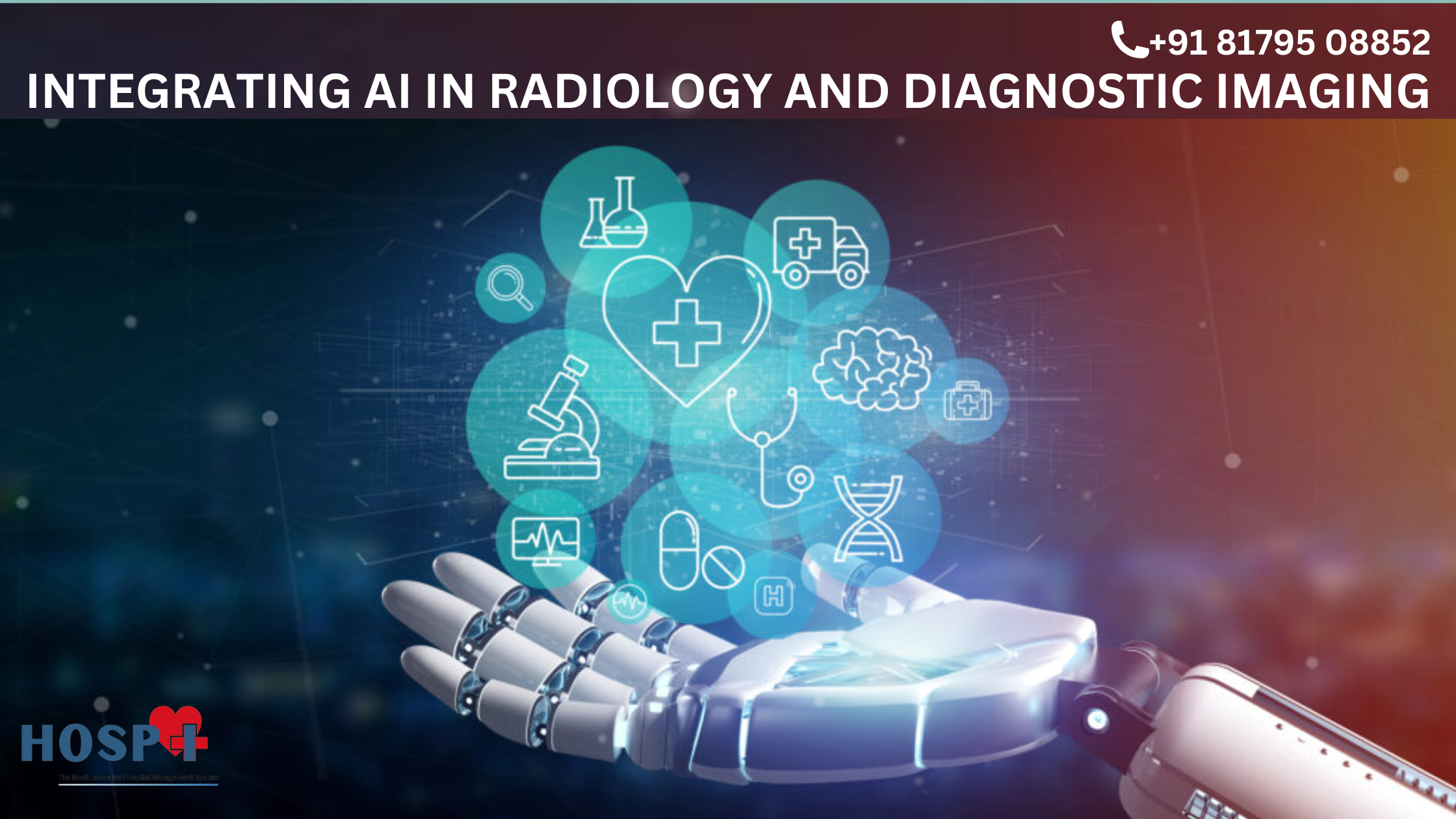Artificial Intelligence (AI) has revolutionized various industries, and one area where it holds tremendous potential is in radiology and diagnostic imaging. With its ability to analyze vast amounts of data quickly and accurately, AI has the power to enhance the accuracy, speed, and efficiency of radiological interpretations. In this article, we will explore the various ways in which AI is being integrated into radiology and diagnostic imaging, the benefits it brings, and the challenges that come with its implementation.
Table of Contents
- Introduction
- AI in Image Recognition and Analysis
- 2.1 Computer-Aided Detection and Diagnosis
- 2.2 Quantitative Analysis
- AI-Driven Workflow Optimization
- 3.1 Intelligent Prioritization
- 3.2 Automated Reporting
- Enhanced Clinical Decision Support
- 4.1 Predictive Analytics
- 4.2 Personalized Treatment Planning
- Addressing Challenges in AI Integration
- 5.1 Data Privacy and Security
- 5.2 Ethical Considerations
- Conclusion
- FAQs
1. Introduction
Radiology and diagnostic imaging play a crucial role in the detection and diagnosis of various medical conditions. However, the interpretation of medical images can be time-consuming and subject to human error. This is where AI comes into the picture, offering the potential to revolutionize the field and improve patient outcomes.
2. AI in Image Recognition and Analysis
2.1 Computer-Aided Detection and Diagnosis
AI algorithms can assist radiologists in detecting and diagnosing abnormalities in medical images. Through deep learning techniques, AI models can be trained to recognize patterns and identify potential anomalies. This can significantly reduce the chances of overlooking critical findings and help radiologists make more accurate diagnoses.
2.2 Quantitative Analysis
AI algorithms excel in quantitative analysis by extracting meaningful data from medical images. For example, in oncology, AI can precisely measure tumor size, volume, and growth rate. This objective information assists clinicians in monitoring disease progression and evaluating treatment response more effectively.
3. AI-Driven Workflow Optimization
3.1 Intelligent Prioritization
With the growing demand for radiological services, AI can assist in prioritizing cases based on urgency and complexity. By analyzing relevant clinical data and image characteristics, AI algorithms can help streamline the workflow, ensuring that critical cases receive prompt attention while optimizing resource allocation.
3.2 Automated Reporting
Generating radiology reports is a time-consuming task for radiologists. AI-powered systems can automatically extract relevant information from medical images and generate preliminary reports. This automation reduces the administrative burden on radiologists, allowing them to focus more on interpreting complex cases and providing personalized patient care.
4. Enhanced Clinical Decision Support
4.1 Predictive Analytics
AI algorithms can leverage historical patient data to identify patterns and predict outcomes. In radiology, this capability can aid in predicting disease progression, treatment response, and potential complications. By providing clinicians with valuable insights, AI-driven predictive analytics can support more informed decision-making and improve patient management strategies.
4.2 Personalized Treatment Planning
Radiology is not just about diagnosis but also plays a vital role in treatment planning. AI algorithms can assist in analyzing medical images and patient data to develop personalized treatment plans. This includes optimizing radiation therapy delivery, surgical guidance, and determining the most appropriate interventional procedures for individual patients.
5. Addressing Challenges in AI Integration
While the integration of AI in radiology and diagnostic imaging brings immense potential, several challenges need to be addressed for its successful implementation.
5.1 Data Privacy and Security
AI relies on vast amounts of patient data to learn and make accurate predictions. Ensuring data privacy and security is crucial to maintain patient trust. Healthcare organizations must implement robust security measures to protect sensitive patient information and comply with relevant data protection regulations.
5.2 Ethical Considerations
AI raises ethical concerns, particularly in decision-making processes. It is important to ensure transparency and accountability in the development and deployment of AI algorithms. Additionally, careful consideration must be given to potential biases in training data to prevent disparities and ensure equitable healthcare delivery.
6. Conclusion
The integration of AI in radiology and diagnostic imaging holds tremendous potential to enhance patient care and improve outcomes. From image recognition and analysis to workflow optimization and clinical decision support, AI offers valuable tools to radiologists and clinicians. However, addressing challenges related to data privacy, security, and ethics is crucial for the successful adoption and implementation of AI in healthcare.
FAQs
Q1: How does AI improve radiological interpretations?
AI improves radiological interpretations by assisting in detecting abnormalities, quantitatively analyzing medical images, optimizing workflow, and providing clinical decision support, ultimately leading to more accurate diagnoses and personalized treatment planning.
Q2: What are the challenges in integrating AI in radiology?
The challenges in integrating AI in radiology include ensuring data privacy and security, addressing ethical considerations, and minimizing biases in AI algorithms to ensure equitable healthcare delivery.
Q3: Can AI help prioritize urgent cases in radiology?
Yes, AI can assist in prioritizing urgent cases by analyzing relevant clinical data and image characteristics, helping optimize workflow and resource allocation.
Q4: How does AI support personalized treatment planning?
AI supports personalized treatment planning by analyzing medical images and patient data to develop customized treatment plans, including radiation therapy optimization, surgical guidance, and interventional procedures.
Q5: What is the role of AI in predictive analytics in radiology?
AI plays a crucial role in predictive analytics in radiology by leveraging historical patient data to identify patterns and predict disease progression, treatment response, and potential complications, enabling more informed decision-making.



